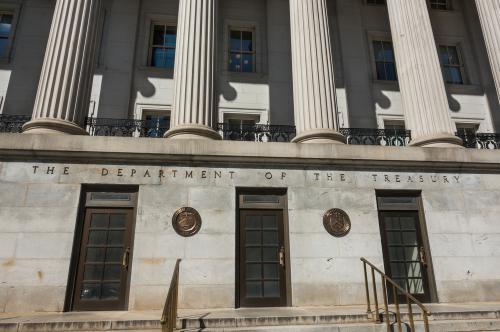As we await Friday’s latest job snapshot from the Department of Labor, it is worth looking under the hood to get a better idea of where we are and where we have been. For the past 3 months the unemployment rate has remained stuck between 7.5% and 7.6%. This is more than half again higher than the unemployment rate at the end of 2007, the last time the job market was at or near full employment. In other words, the recent unemployment rate is between 2.5 and 3.0 percentage points above the level we should expect at full employment.
Is the standard unemployment measure “masking” the true extent of hardship in the job market? It’s certainly telling us the job market is a long way from the pink of good health. This fact by itself is astonishing in view of the fact that private sector employment began to rise in March 2010 and has risen every month since then (that is, for 39 straight months). Based on the nation’s experience after earlier recessions, we should expect to be much closer to full employment at this stage of the recovery. The problem, of course, is that public plus private job creation has been anemic given the depth of the 2008-2009 recession and the sharp drop in employment that occurred in the downturn.
The standard unemployment measure certainly misses some kinds of labor market hardship. Since the end of 2007, the number of employed workers who work part-time but want full-time jobs has increased about 4.3 million, or more than 70 percent. These part-time employees get counted as “employed” in the employment statistics and are missed in the standard unemployment numbers, so in a sense their hardship is missed by the unemployment rate.
In May there were also 780,000 discouraged workers. These are people who have looked for a job in the recent past and would be willing to take a job if they thought work were available, but have given up their job search because the effort seems pointless. This number is twice its level in December 2007. Discouraged workers, because they haven’t looked for work in the past month, also are missed by the standard unemployment statistics.
The Bureau of Labor Statistics (BLS) calculates a measure of unemployment that gives weight to the hardship of workers on involuntary part-time hours and workers too discouraged to actively look for a job. That measure, called the “U-6 unemployment rate,” stood at 13.8% in May 2013, a full 5 percentage points higher than it was at the end of 2007, before the Great Recession began. This estimate can be interpreted to mean that 13.8% of the actual plus potential workforce is suffering hardship – job loss or involuntary short hours – as a result of the slow recovery from the downturn.
Even though the standard unemployment measure fails to capture every dimension of labor market hardship, the measures just mentioned all point in the same direction: The job market is recovering, but it is recovering slowly and the patient remains a long way from good health. The U-6 unemployment rate is 3.3 percentage points lower than it was at its highest point in late 2009 and early 2010 – around the same time as the peak level of the standard unemployment rate. The number of discouraged workers is more than 500,000 below its peak level in late 2010. The number of workers who involuntarily work part-time hours has shrunk about 1.2 million from its peak level in late 2009 and early 2010.
None of these indicators tells us the fraction of workers who hold positions that are below their occupational or educational qualifications. I suspect this kind of underemployment is considerably worse that it was at the end of the last expansion. However, this dimension of worker hardship is not one that is tracked by a BLS statistical series. In spite of its shortcomings, the standard unemployment rate is telegraphing a plain message: We’re still a long way from full employment. This is exactly the message conveyed by less standard statistics. The unemployment rate is also telling us we’re making slow progress closing the full-employment gap, the same pattern we see in the other indicators.
Supplemental statistics on employers’ hiring, firing, and job vacancies, obtained from the Job Openings and Labor Turnover Survey (JOLTS), tell us three additional things:
- The layoff rate has fallen back to approximately its level before the Great Recession.
- Our slow progress in whittling down the number of unemployed is traceable to the meager number of job openings being created by private and public employers.
- Workers still seem frightened by the prospect of losing or leaving their jobs. The voluntary quit rate remains well below its level when the job market was healthier, that is, during the years before Great Recession.
In view of these indicators of poor job market health, it should be obvious why the bargaining power of employers remains so strong and that of workers so weak. A byproduct of the power imbalance is the stagnation in worker compensation. Another is the historically high rate of business profitability. Workers and businesses both appear to understand a simple implication of the unemployment statistics. The current job market is not one in which workers should expect—or perhaps even demand—a big pay hike.
The Brookings Institution is committed to quality, independence, and impact.
We are supported by a diverse array of funders. In line with our values and policies, each Brookings publication represents the sole views of its author(s).



Commentary
Does the Unemployment Rate Mask Today’s Job Market Hardship?
July 2, 2013